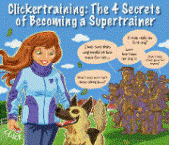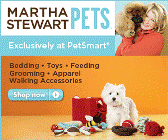Good Dog Training Advice
Get Fast & Simple Dog Training Tips to
Turn a Difficult Dog Into an Obedient Pet!
How to Stop Dogs Being Rough with Children
There's nothing quite as scary as a dog getting a little rough with your child. The immediate response can often be fear and anger, yelling at your dog to stop or even punishing them for their actions. However, in most cases, a dog doesn't even realize what he is doing wrong. Dogs are playful by nature. As social creatures, it is how they interact with their packmates. Children look a lot more like them than you do, and are of a similar size. Naturally, they want to play with them, but they can often get rough, going too far or treating them as if they really are dogs. This kind of rough behaviour is not good for a number of reasons. It can scare your child and can lead to injury. But, even worse, if your child is not scared or harmed by you dog, another child could be. Imagine your dog running into a child at the dog park and thinking they are a play thing. The child's parents will be very upset and your dog will have no clue what he did wrong. So, rather than allowing the rough housing to continue, you need to cut it off as early as possible. Behaviours to Correct To start with, you'll need to correct your dog's behaviours across the board. You cannot simply tell them not to play rough with children any more. They won't understand and a confused dog is even more dangerous than a rough housing dog. So, instead of trying to set certain "conditions" to the behaviour, just stop it outright. To do this, take away any other rough behaviour that goes with it. This includes jumping, mouthing (when they wrap their mouths around your arm or hand), and chewing. These are all things that dogs will do when playing with each other, but that you cannot allow with other human beings. The easiest way to do this is to immediately stop playing with you dog whenever this behaviour starts. You don't want to punish them, lest they become confused. This would also cause your dog training efforts to go down the drain. However, if you can draw clear lines in the sand about what they are doing and why your dog needs to be calmer, you'll find it infinitely easier to maintain control of their behaviour. Dealing with Children If you have children yourself, the first thing you'll need to do here is to tell your children to stop playing rough with the dog. This can be hard, especially if they enjoy wrestling or rough housing. But, it is important that the dog has consistent boundaries. Additionally, practice maintaining a calm, assertive stance with your dog when children are around. This will help reduce the opportunities for the dog to become agitated and playful. For more help on this, you might want to check out these dog ebooks and our in-house dog training course. In open spaces like your yard or dog parks, make sure to keep a close eye on your dog. Have a command to get them to immediately relax. This can be "sit" or "stay" or "heel", but it needs to be well understood so that you can use it and immediately cut off any potential problems. When it comes to rough behaviour with children, remember that your dog is not trying to hurt them. They're having fun and they just want to let the child know how much fun they're having. It's just that most children have a different definition of fun than your rambunctious pup. Another thing to remember is that if there is actual aggression in the rough behaviour, it is an entirely different matter and must be treated more seriously. Don't allow an aggressive dog near children, and make sure to get the help of an expert immediately before something happens. For the ultimate guide to stopping dog aggression towards childing, people and other dogs, check out: | |
|


Discover the Secrets to Training Your Dog Or Puppy. Huge BONUSES for a limited time only!
Click here now...
|
http://GoodDogTrainingAdvice.com





